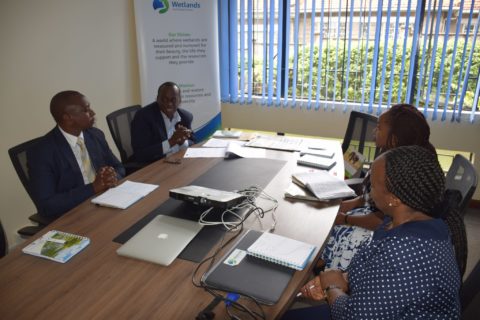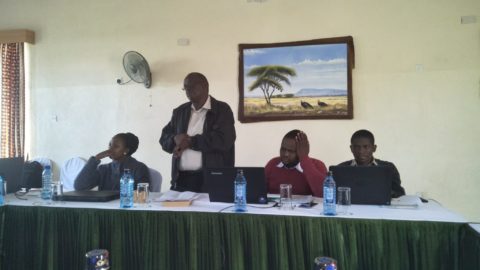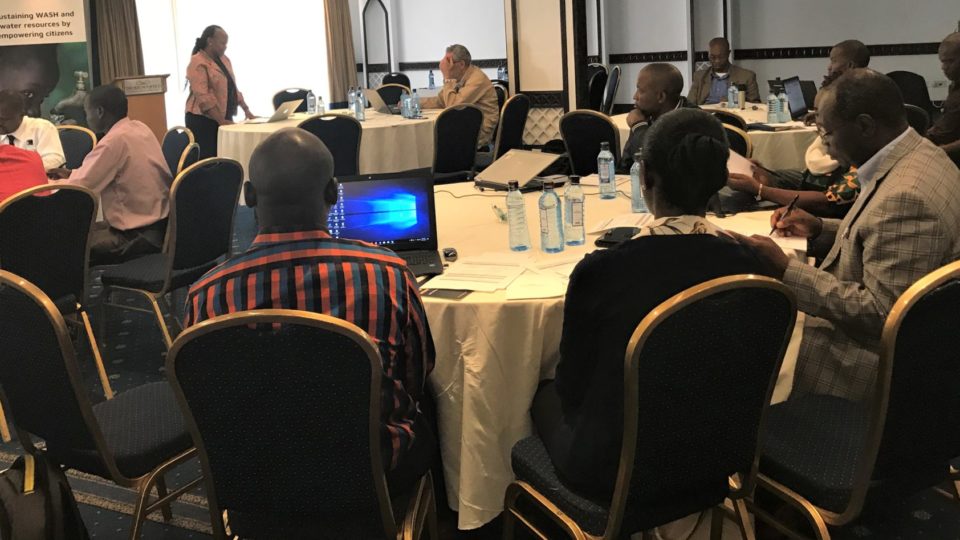Kenya has been experiencing many challenges affecting the wetland ecosystem, which vary from human-induced to natural causes with lots of concerns raised over the current overload of wetlands in Kenya, that threaten the country’s water security. It is with this background that we have been working to review the Environmental Management and Co-ordination (Conservation and Management of Wetlands) Amendment Regulations, 2009 for Kenya. We are pleased to announce that the 2018 draft is now ready and plans are underway to present this to the Cabinet Secretary for Environment and Forestry.

What does this mean for Kenya
These Regulations provide for a regulatory framework with mechanisms to enforce the Environmental Management and Coordination (Amendment) Act, 2015 and to align it with the Kenyan Constitution 2010. The Regulations also provide for procedures for declaring a wetland as a protected area; regulation of activities to be undertaken in a wetland through permits; protection and management of traditional interests; and protection of riparian reserves including demarcation of a protected zone of fifty (50) metres measured inland from the high-water mark. These inter alia are critical provisions to ensure disaster risks are reduced. Wetlands International has been supporting the review of the National Wetlands Regulations for Kenya since April 2017. Wetlands act as natural safeguards against disasters, which makes them important for protecting communities most at risk and vulnerable to the devastating effects of floods, droughts and storm surges. Presently, wetlands in Kenya are being degraded at an alarming rate through unsustainable human activities such as mining, dredging, encroachment among others. This has led to increased disasters such as floods and droughts and reduced community-coping strategies, particularly in PfR II-focus counties along the Ewaso Ng’iro and Tana River basins covering Samburu, Laikipia, Isiolo and Tana River. Currently, Kenya is experiencing severe floods due to the ongoing rainfalls that have damaged properties and caused injury and death all over the country.
Our Journey!
Policy influencing is one of the key domains for Integrated Risk Management under the Partners for Resilience programme. In Kenya, supporting policy formulation and legislative processes can be very long and expensive and, sometimes, never completed because of various factors, including political good will. Wetlands International has been well aware of these challenges especially from the experiences of supporting the development of the National Wetlands Policy, 2015. It is against this backdrop that we started by conducting stakeholder power analysis, including ongoing national legislative priorities. We identified the National Environment Management Authority (NEMA) as the key Government Institution with the mandate to review Wetlands Regulations. Through a Memorandum of Understanding (MoU) signed between NEMA and Wetlands International, a broader framework for collaboration has been established to provide for an engagement platform for sustainable wetlands management in the country. One of the elements of collaboration is to support NEMA in reviewing the Environmental Management and Co-ordination (Conservation and Management of Wetlands) Amendment Regulations, 2009 to align with the provisions of the Constitution of Kenya 2010.

Together with NEMA we, held several consultative and planning meetings to identify the best strategies for the review of the Regulations key among them the issues of stakeholders/public participation, and timeframe, including extra challenges anticipated since 2017 was an electioneering year in Kenya. The team developed a concept paper and a plan that would then guide the process. A team of 12 experts on wetlands-related issues were identified and a workshop held in Naivasha to review the Regulations. The first draft of the Amended Regulations was produced from this meeting, after which we invited the public to provide comments on the first draft of the Amended Regulations, through a gazette notice. The comments from various stakeholders including the academia, private sector, CSOs and individuals were later incorporated in the Regulations.

Stakeholder meetings and public consultation is a mandatory step in policy and legislative making process under the Constitution of Kenya 2010. Together with NEMA, we held stakeholder meetings in Malindi to pave way for public/citizen participation, particularly on coastal and marine wetlands ecosystems. Different stakeholder among them the local community, the Water Resource Users Association (WRUAs), academia, government – both national and county, and CSOs participated in this process. The feedback from the community abetted us in identifying the challenges affecting wetlands in the area. WRUAs are formed under the Water Act 2016, for collaborative management of water resources and conflict resolution at sub-basin/sub-catchment level and play a key role in water resources management including wetlands. Among commentaries raised from communities living in Tana Delta highlighted the importance of enhancing community capacity in wetlands management for improved livelihoods and also to reduce disaster risks.
In November 2017, a national validation workshop was held in Nairobi, with an objective to present the second draft of the Regulations to national stakeholders for validation and comments. Key comments from the national stakeholders included the need to acknowledge the role of wetlands in the provision of ecosystem services to support livelihoods and also to enhance resilience by reducing disaster risks. In April 2018, a final meeting bringing together different experts including government, CSOs, private sector and academia was held to review and incorporate comments from the Malindi stakeholders meeting, the validation workshop and both oral and written submission received from the public notice, and thus, the Draft Environmental Management and Co-ordination (Conservation and Management of Wetlands) Amendment Regulations, 2018 for Kenya were finalised.

Next steps!
The next steps is to present of the Regulations through National Environment Management Authority (NEMA) to the Cabinet Secretary for Environment and Forestry who will present to the Cabinet for Approval and then to Parliament for debate and adoption.
This will be a key milestone for PfR Kenya Alliance in mainstreaming IRM in the National Wetlands Regulations.

